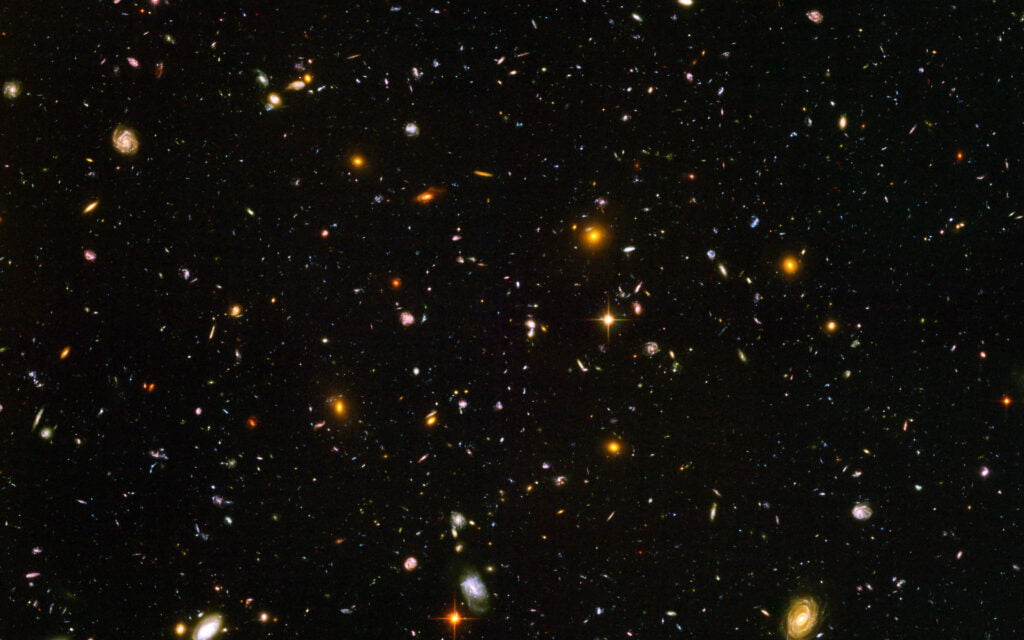About website
Why this website?

It was in 2016 that I came up with the idea of creating a website dedicated to this passion, after realizing that the photo galleries of space agencies are not necessarily pleasant to browse, that there is no sorting, that the most beautiful photographs are not necessarily highlighted, and that there are as many different galleries as there are space exploration and observation missions.
This first site, named “Eyes of Universe,” did not stay online for very long. It was at the beginning of 2023 that I created version 2 of the site, which you are currently on!
Usage & Navigation Tips
Here are a few tips and notes about using the site:
_Although this site is somewhat responsive design – meaning it adapts to the size of your screen – it was designed and conceived to be viewed on a fairly large desktop computer screen. I strongly recommend that you visit this site on a wide screen.
_In order for you to fully appreciate the images on the homepage and in blog posts, they are displayed in fairly high resolution and are not heavily compressed, or even in their original size. As a result, they are about 2MB or more, and it is recommended to visit this site using a high-speed internet connection.
_Although this site is by default displayed in English for a wider audience, it is not my native language, and therefore it is possible that you may find translation errors on the English part of the site. Any help in improving the current translation is welcome.
They helped me in one way or another
I would like to thank the following people for their invaluable help!
• Davidmp5fr tagged the 1243 photos of the Apollo 09 mission.General Information
_The “Archive” page of the site is dedicated to navigation and searching through the image database, as well as viewing in your browser. It is possible to display and download each image via this page. For bulk downloads, please consult the “About archive” page.
_The exceptionally large images stored on this site are not compressed or resized so that you can enjoy them to the fullest. However, in order to significantly reduce the disk space used, most of the large collections undergo slight compression or sometimes even a reduction in resolution.
_In order to make the homepage as breathtaking as possible, some photos undergo special processing in software using artificial intelligence models to double the resolution while improving the sharpness and details of the image. The software used is called Upscayl, and the results are very impressive. It is free and open source software. In addition, some photos of the Apollo missions are manually retouched to remove dust or crosses present on the camera lenses. Photos can also be cropped so that they display properly in landscape format.
Limitations and Disclaimer
_As explained above, some images stored here can be several hundred megabytes in size. In these particular cases and due to technical limitations, it is possible that in the archive section you may not be able to see the thumbnail or the complete image when you click on it. However, it is still possible to retrieve the image in different ways; please visit the “About Archive” page for more details. Depending on the power and age of your computer, attempting to display these images may cause your browser, or even your computer (temporarily, of course), to crash.
Technologies Used
_The entire site except for the archive section is powered by WordPress.
_The WordPress theme used is called “Blacksilver“
_The “Piwigo” application is used for the gallery (for more information on the software and scripts used for image processing and downloading, please visit the “About archive” page).
Photo credits
Credit for the photo used in this page
Credits for the photos used for the illustrations of the different pages of the WordPress site
• The “FAQ” page : “The Rich Color Variations of Pluto” — NASA, Johns Hopkins University Applied Physics Laboratory, Southwest Research Institute | Licence : domaine public
• The “Legal Notices” page : “Full Moon 2010“ — Gregory H. Revera | Licence : Creative Commons BY SA 3.0
• The “Credits” page : “Return to Rhea” — NASA, JPL-Caltech, Space Science Institute | Licence : Domaine public
• The “Wallpapers” page : “Global Color View of Mars” — NASA, JPL, USGS | Licence : Domaine public
• The “Tools” page : “Hubble’s View of Jupiter and Europa in August 2020” — NASA, ESA, A. Simon (Goddard Space Flight Center), and M. H. Wong
(University of California, Berkeley) and the OPAL team | Licence : CC BY 4.0
